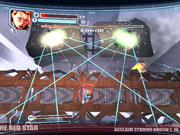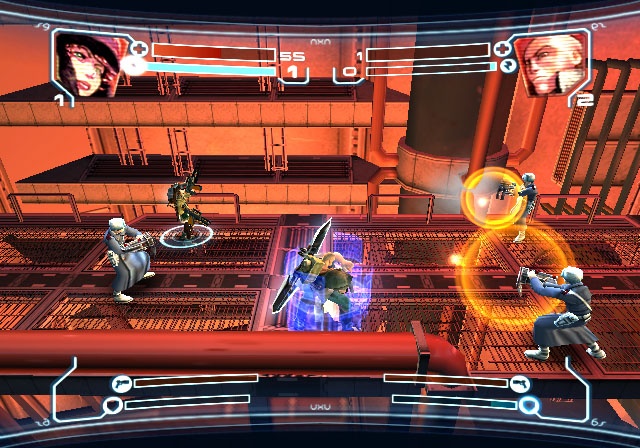The Red Star was in a near-final state and was fast approaching its original fall 2004 release date when its beleaguered publisher, the now-defunct Acclaim Entertainment, filed for bankruptcy. Acclaim shut down all operations and sold off whatever assets it had--from office furniture to unfinished games. The Red Star, though, seemed to have been lost in the shuffle, permanently shelved. Nearly two years passed before XS Games unexpectedly announced that it was resurrecting The Red Star and bringing it to the PlayStation 2. As entertainingly tumultuous as this development history is, The Red Star beats the odds and manages to stand on its own as a highly concentrated action game that ably blends two old-school genre staples--the beat-'em-up and the top-down shooter--into an unrelenting experience.

The Red Star is based on a graphic novel of the same name that takes place in an alternate-history version of Soviet Russia, the URRS, where technology and magic commingle. The game features plenty of locations and characters from the graphic novel, but the game doesn't capture that hard, cold, Soviet feel, nor does it put much stock in the story. Instead, The Red Star focuses wholeheartedly on the action. You can choose from two different characters to play as, and while both can dish out ranged weapon fire as well as up-close melee attacks, each encourages a different play style. Makita is nimble, but she doesn't deal much damage with her hammer and sickle, and can't take much damage, either, while Kyuzo is more like a tank--slow-moving, heavily armored, and capable of administering powerful attacks.
When you first start the game, it has the appearance of a standard side-scrolling beat-'em-up. You walk to the right down a narrow path as squads of enemy soldiers come at you, and you dish out multihit combo attacks by repeatedly tapping on the square button. Even if it never deviated from this formula, The Red Star would be pretty good as a pure beat-'em-up. There's a good variety of enemies, each of which requires a different strategy to defeat. Some enemies are unharmed by either ranged or melee attacks, or they might be damaged by a ranged attack only after being stunned by a melee attack, while others are able to roll out of regular combos. There are enemies that can prove to be a handful when you're just fighting them one-on-one, and after you've had a few encounters with that type of enemy, the game's not afraid to throw several of them at you at once, along with a few other types of enemies for good measure. You've got a formidable arsenal on your side, but it still gets real hectic real quick.
As much fun as the pure beat-'em-up action in The Red Star can be, the game's real strength is how it constantly mixes up the action. At several points during every mission, alarms will go off and the camera will shift perspective. Your side-scrolling beat-'em-up will suddenly turn into a top-down shooter, complete with screen-filling war machines that spew complex bullet patterns for you to maneuver around. The recurrently shifting nature of the gameplay keeps you on your toes, and knowing that each level will contain what amount to several massive boss fights is great motivation to push forward. Though the back-and-forth pattern of fighting a gang of enemy soldiers and then blasting your way through some giant boss fight eventually becomes a little predictable, it ultimately staves off the monotony that often plagues both shooters and beat-'em-ups.
The levels in The Red Star aren't particularly long, and the game is actually pretty generous with how it ramps up the difficulty, but the pacing is unyielding, and when the game gets hard, it is merciless. You've got but one life bar with which to complete each level, and while you'll usually get a little first-aid kit after each of your big shooter encounters, it's not uncommon to get most of the way through a level just to get smoked and have to do the whole thing over again. The game isn't sadistic about it, but having to replay a full level several times can still prove a bit frustrating. Still, when you do finally get past that one boss fight that you've been banging your head against, it's supremely satisfying.

While the gameplay concepts in The Red Star aren't particularly new, the way they're assembled is smart and refreshing. As much fun as The Red Star is to play, the presentation is serviceable, but it doesn't really pop. The scope of the visuals is focused, with a cohesive, industrial feel, but the environments don't give much sense of depth, and the characters look pretty blocky. The weapon fire has a good, bassy sound that's complemented by some surprisingly noteworthy use of the Dual Shock2's force feedback, but the battle cries and background music are otherwise forgettable.
The Red Star isn't an exceptionally long game, but it's the kind of game that begs to be replayed, and the inclusion of two-player co-op action makes it that much more appealing to come back to. Considering its troubled past, it's impressive that The Red Star came out at all, let alone that it's a great game.